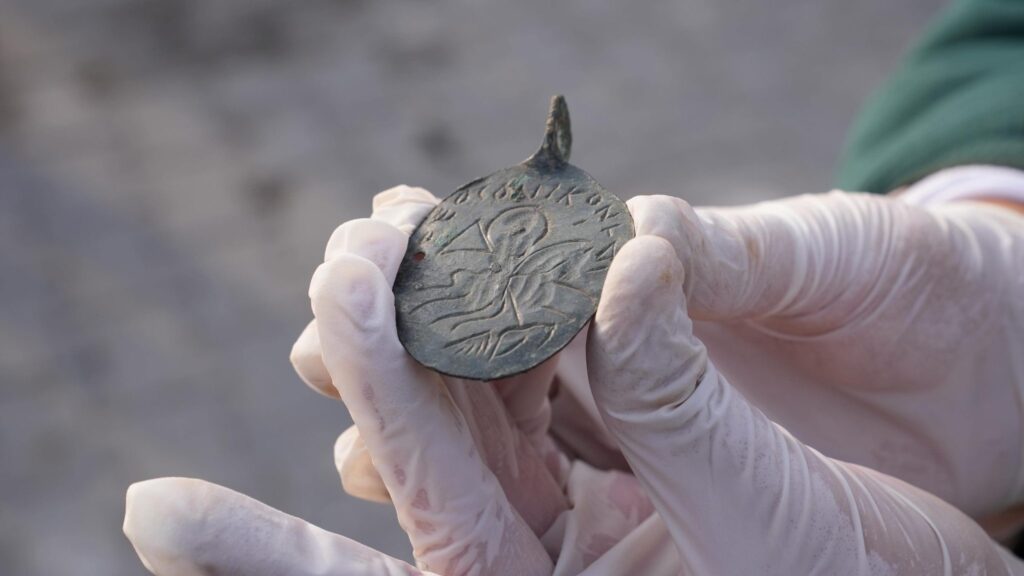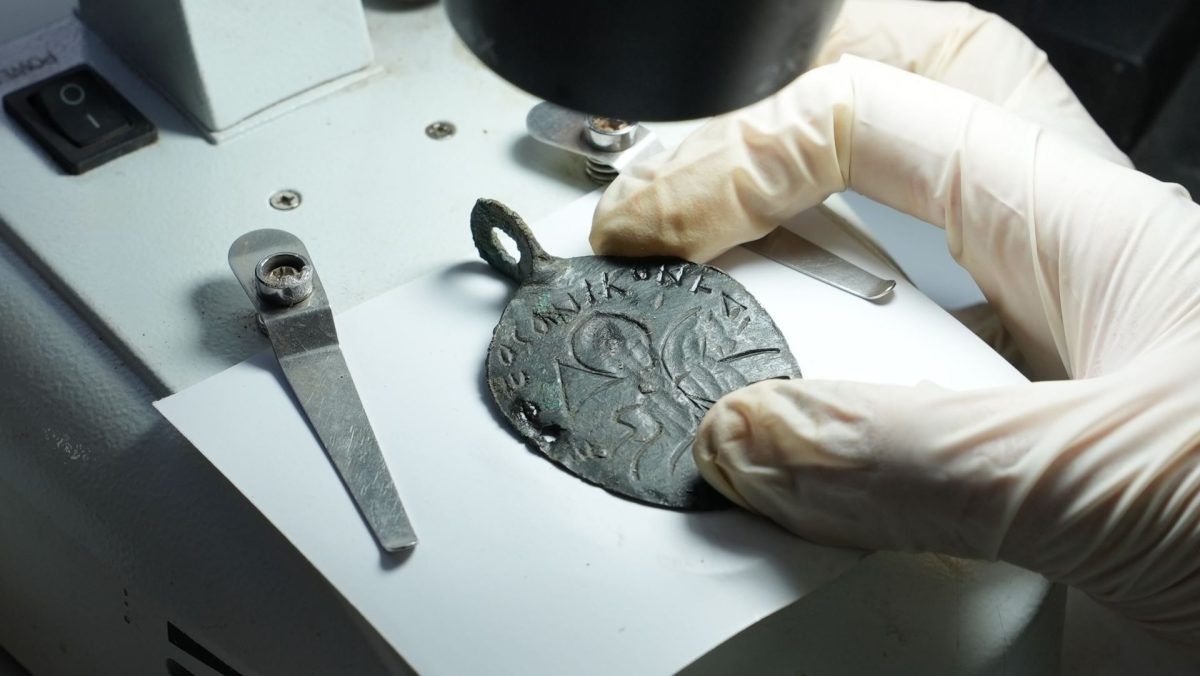Excavations at Hadrianopolis, an ancient city in Eskipazar, Karabük, have revealed a rare fifth-century A.D. amulet pendant featuring the image of the Prophet Solomon. The discovery is part of ongoing archaeological efforts led by Associate Professor Ersin Çelikbaş of Karabük University, under the Culture and Tourism Ministry’s Legacy for the Future Project.
Hadrianopolis, often referred to as the “Zeugma of the Black Sea” due to its intricate animal mosaics on church floors, has already yielded remarkable structures such as baths, churches, a theater, rock tombs, and sacred sites. The latest find, a pendant inscribed with “Our Lord has overcome evil,” depicts Solomon on horseback spearing a demon.

“This depiction highlights Solomon’s significance across Judaism, Christianity, and Islam,” said Çelikbaş. “The artifact, found during the excavation of a structure labeled ‘SDJ-3,’ is unprecedented in Anatolian archaeology.”
The pendant also features the names of the four holy angels—Azrael, Gabriel, Michael, and Israfil—on its reverse. Çelikbaş emphasized its rarity, noting that the only similar artifact was previously discovered in Jerusalem, underscoring Hadrianopolis’s historical importance as a religious and military center.
Based on inscription analysis and excavation data, the artifact has been dated to the fifth century A.D., offering invaluable insights into the region’s cultural and religious dynamics during the Roman and Early Byzantine periods.







